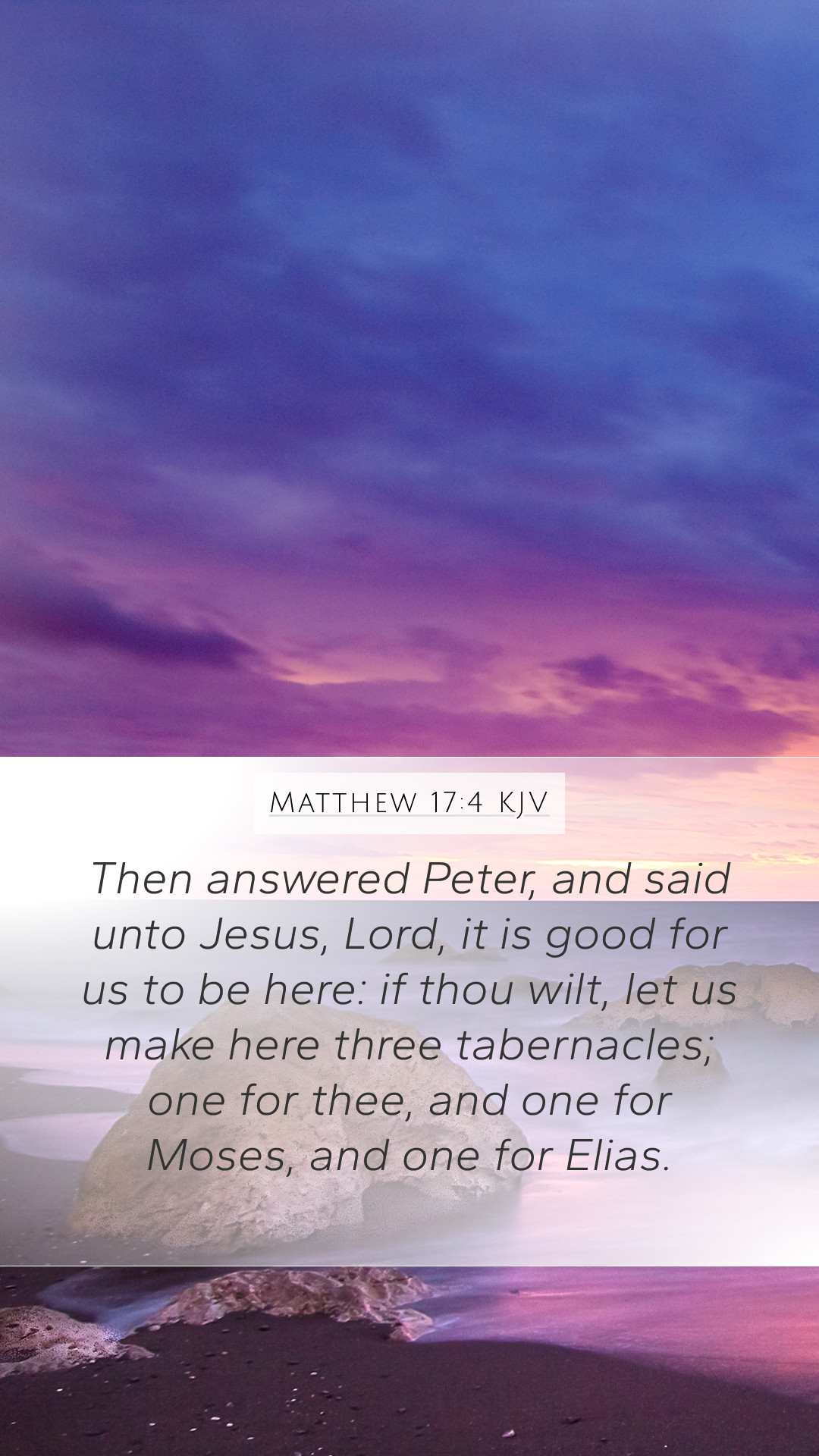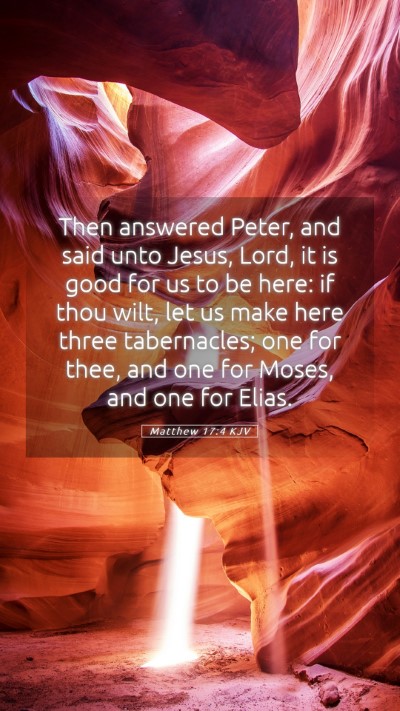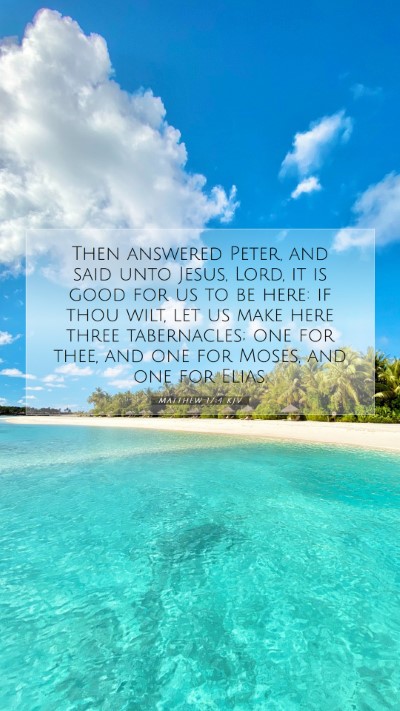Understanding Matthew 17:4
Matthew 17:4 states: "Then answered Peter, and said unto Jesus, Lord, it is good for us to be here: if thou wilt, let us make here three tabernacles; one for thee, and one for Moses, and one for Elias."
This verse occurs during the Transfiguration of Jesus, where Peter, along with James and John, witness a divine revelation of Christ in glory, alongside the figures of Moses and Elijah. This moment has significant theological implications, exploring themes of divine presence and recognition, the fulfillment of the Law and the Prophets, and the nature of worship.
Key Insights from Public Domain Commentaries
-
Matthew Henry's Commentary:
Henry emphasizes Peter's impulsive desire to set up tabernacles, which reflects a misunderstanding of the moment's significance. He suggests that Peter wished to prolong the encounter without grasping that it pointed to the greater reality of Christ's mission, which transcends earthly forms of worship.
-
Albert Barnes' Notes:
Barnes interprets Peter's suggestion as an expression of reverence, but he also points out the inadequacy of trying to encapsulate the divine experience in physical structures. Barnes highlights that the appearance of Moses and Elijah symbolizes the connection between the Old Testament and the new covenant established by Jesus.
-
Adam Clarke's Commentary:
Clarke elaborates on the significance of the three tabernacles, noting that Peter’s proposal can be seen as an attempt to honor all three figures equally, which Clarke views as a misstep. He emphasizes that Jesus is the focal point and that the divine revelation presented in this moment establishes His supremacy over the Law and the Prophets.
Theological Themes
From the insights gathered, we can deduce several important themes reflected in this verse:
- The Presence of God: The occurrence signifies a moment where heaven touches earth, signaling the importance of divine encounters in believer's lives.
- Worship and Recognition: Peter’s desire to build tabernacles reveals human tendencies to define and contain the divine buffet through worship models.
- Connection with the Old Testament: The presence of Moses and Elijah signifies continuity and fulfillment of God’s redemptive story through Jesus.
Applications of Matthew 17:4
This verse not only provides a profound theological meaning but also prompts reflections on personal application:
- Recognize God’s presence in our lives and create space for divine encounters.
- Understand that worship cannot be confined to structures; true worship occurs spiritually and in truth.
- Appreciate the integration of the Old and New Testaments for a fuller understanding of Scripture.
Further Biblical Context
Matthew 17:4 can be linked to other scriptural passages that enrich our understanding:
- Luke 9:33 - Provides a parallel account of Peter’s reaction during the Transfiguration.
- 2 Peter 1:16-18 - Reflects on the apostolic witness to the Transfiguration.
- Exodus 24:15-18 - Highlights Moses' experience on Mount Sinai, which has thematic ties to the Transfiguration.
- Revelation 11:3-12 - Relates to the prophetic nature of Moses and Elijah.
Conclusion
Matthew 17:4 invites believers to reflect on how they can encounter the divine and respond with appropriate worship. By studying this verse, we uncover layers of meaning regarding Jesus' identity, the connection to the Old Testament, and the nature of heavenly experiences. This exegesis encourages deeper Bible study and a commitment to understanding scripture within its broader context.
Related Keywords
- Bible verse meanings
- Bible verse interpretations
- Bible verse understanding
- Bible verse commentary
- Scripture analysis
- In-depth Bible verse analysis


